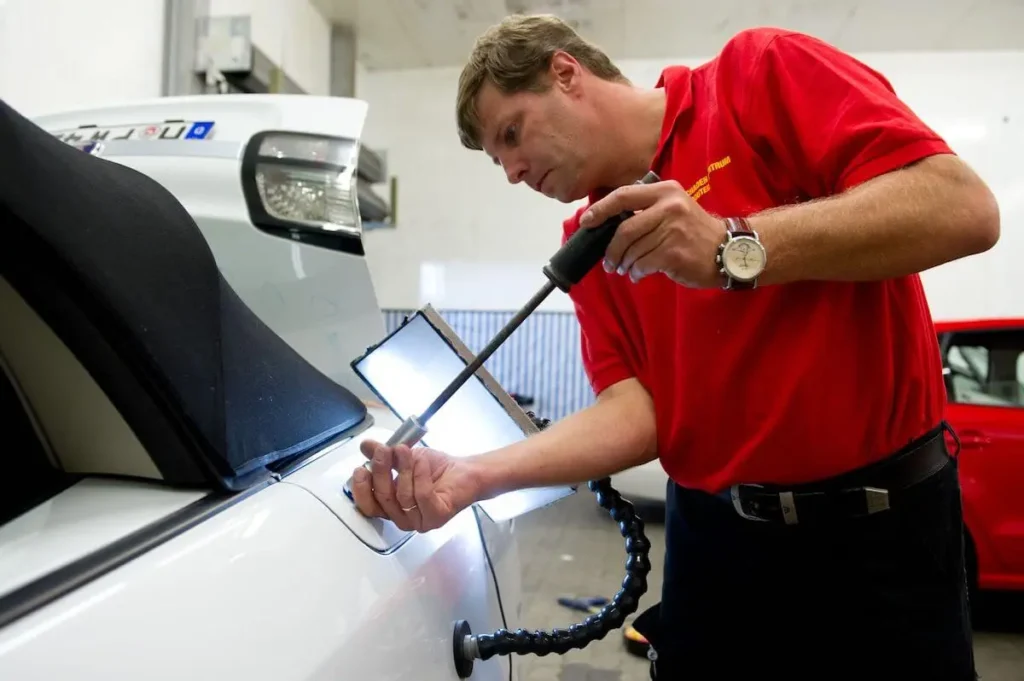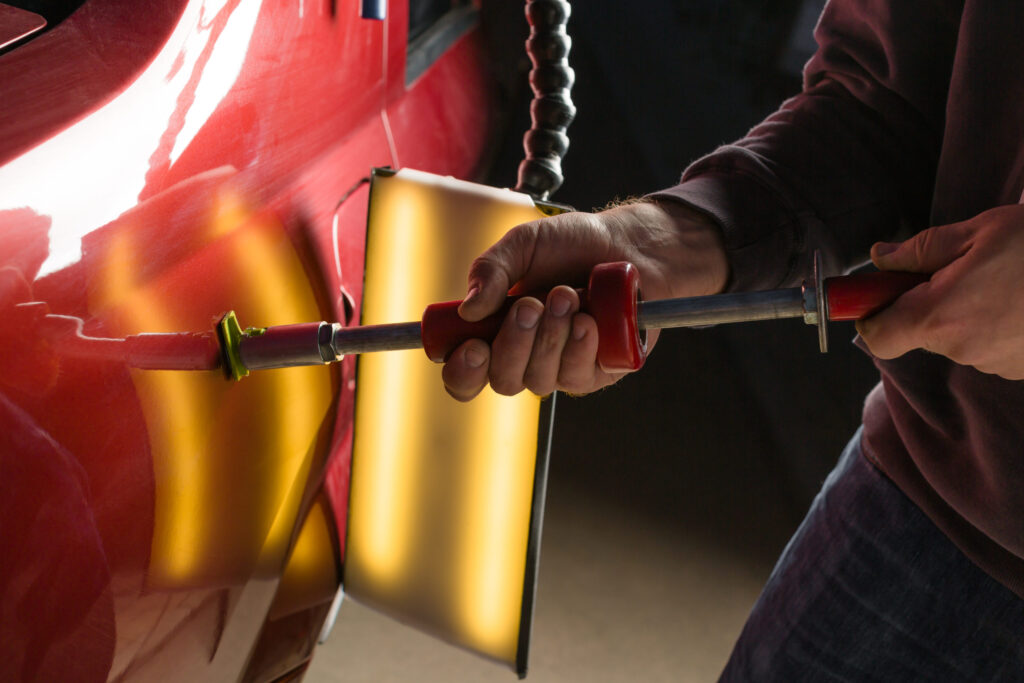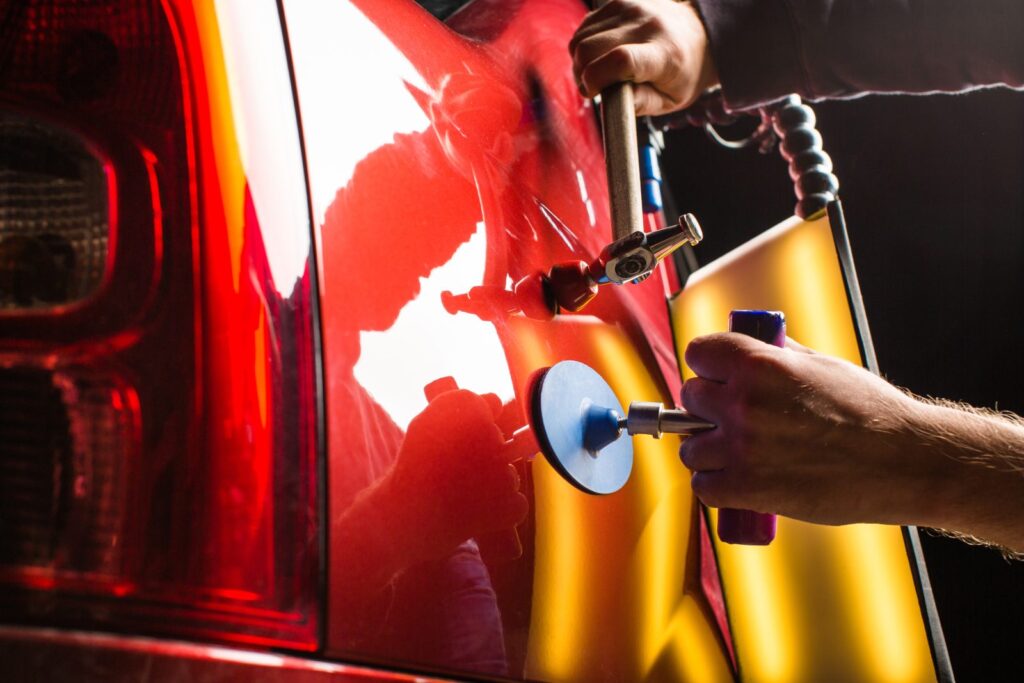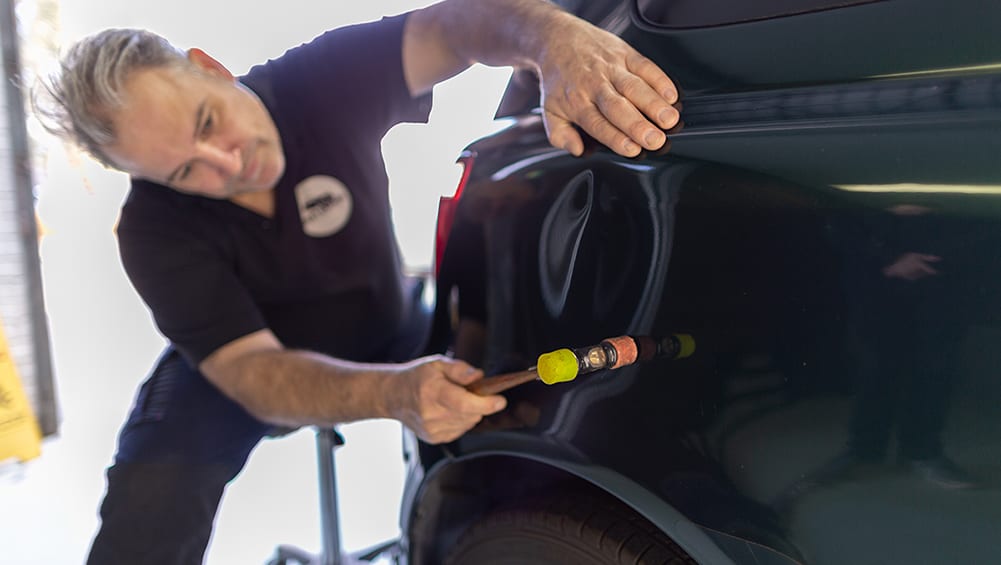Dents on your vehicle can be an eyesore, but fear not, as the art of dent repair is a skill that anyone can master with the right tools and techniques. Whether your car has suffered a minor door ding or a more significant dent, understanding the fundamentals of repair is invaluable. This comprehensive guide will walk you through the entire process, from assessing the damage to achieving a seamless finish.
Must-Have Tools for Dent Removal

Before diving into the repair process, it’s essential to have the right tools at your disposal. Some of the must-have tools, often considered the best PDR tools, include a puller, dent rods, body filler, sandpaper, and paint. These tools come in various shapes and sizes, so selecting the right ones for your specific repair job is crucial.
A puller is a versatile tool that deserves special attention. It typically consists of a suction cup or a lever mechanism. The suction cup attaches to its surface, while the lever creates a vacuum, pulling it outward. Pullers are especially useful for shallow dents that have not creased the metal. For deeper cuts or those with creases, rods and body filler may be necessary.
Assessing the Type and Severity
Not all dents are created equal. Some may be shallow, while others can be deep and extensive. Understanding the type and severity of the dent is the first step in devising an effective repair strategy. You’ll need to inspect the damaged to determine the best approach. is damaged to determine the best approach.
Tips for Preparing the Damaged Area
Preparation is key to achieving a successful repair. Clean the damaged area thoroughly to remove dirt, grime, and loose paint. Sand the area around the dent to create a smooth surface for the repair. Properly preparing the damaged area ensures that the repair materials adhere correctly.
When sanding, it’s crucial to feather the edges of the paint around it. Feathering involves gradually reducing the thickness of the paint as you move away from the center of it. This technique helps the new paint blend seamlessly with the existing finish, reducing the visibility of the repair.
Step-by-Step Dent Removal Process

Source: primetimepdr.com
The removal process typically involves a series of steps. You’ll start by applying heat to the dent to make the metal more pliable. Then, using the appropriate tools, gently massage the dent back into its original shape. This process may need to be repeated several times to achieve the desired results.
For PDR, the process is even more intricate. Specialized tools, such as rods and body picks, are used to access the inside of the panel and apply precise pressure to push it out. PDR technicians often spend years perfecting their technique, as it requires a delicate touch and an understanding of the metal’s behavior.
Techniques for Using a Dent Puller
A puller is a valuable tool for removing dents, especially those that cannot be reached from behind. To use a puller effectively, you’ll need to attach it to the center of the dent, apply steady pressure, and then pull it outwards. This action should gradually pop the dent back into place.
Mastering the Art of Paintless Dent Repair
Paintless dent repair (PDR) is a technique that doesn’t require repainting the affected area, making it a preferred method for many. PDR involves massaging the cut out from the inside using specialized tools. This technique requires finesse and patience, but it can produce flawless results.
One of the key advantages of PDR is that it preserves your vehicle’s factory finish. Since there’s no need for paint or filler, the repair is less invasive and typically costs less than traditional repair methods. Additionally, PDR is environmentally friendly, as it eliminates the need for paint and solvents.
Expert Tips for Smoothing Out the Surface

Once the pattern is removed, you may need to apply body filler to create a smooth surface. Sand the filler down until it’s level with the rest of the vehicle’s surface. This step is crucial to ensure a seamless finish when it’s time to repaint.
When applying body filler, it’s essential to work quickly and efficiently, as the material dries rapidly. Begin by mixing the filler according to the manufacturer’s instructions and applying it to the damaged area. Use a plastic spreader to smooth the filler and feather the edges to create a seamless transition between the repaired area and the surrounding paint.
Final Touches and Finishing for a Seamless Look
After smoothing out the surface, it’s time to apply primer, paint, and clear coat to match the vehicle’s original finish. Take your time during this step to ensure that the color and texture blend seamlessly with the surrounding area. Properly matching the paint is essential for a flawless finish.
Common Mistakes to Avoid in Dent Repair
While learning dent repair, it’s essential to be aware of common mistakes that can compromise the outcome. Rushing through the process, using the wrong tools, or neglecting surface preparation can lead to subpar results. Patience and attention to detail are your allies in this endeavor.
Maintenance and Care to Prevent Future Dents

Source: carsguide.com.au
Once you’ve mastered the art of repair, it’s equally important to know how to prevent future cuts. Practicing safe parking, avoiding collisions, and using protective measures like car covers and bumper guards can help maintain your vehicle’s pristine appearance.
Safe parking practices include choosing well-lit areas, avoiding crowded parking lots, and being mindful of other vehicles and obstacles when opening your car doors. Consider installing parking sensors or a backup camera to aid in parking and avoid accidental collisions.
Conclusion
In conclusion, dent repair is a valuable skill that can save you money and keep your vehicle looking its best. With the right tools and techniques, anyone can learn to repair dents effectively. Whether you opt for traditional removal or paintless repair, following the steps outlined in this guide will help you achieve professional-quality results. Remember that patience and attention to detail are key to mastering the art of repair and maintaining your vehicle’s beauty for years to come.



